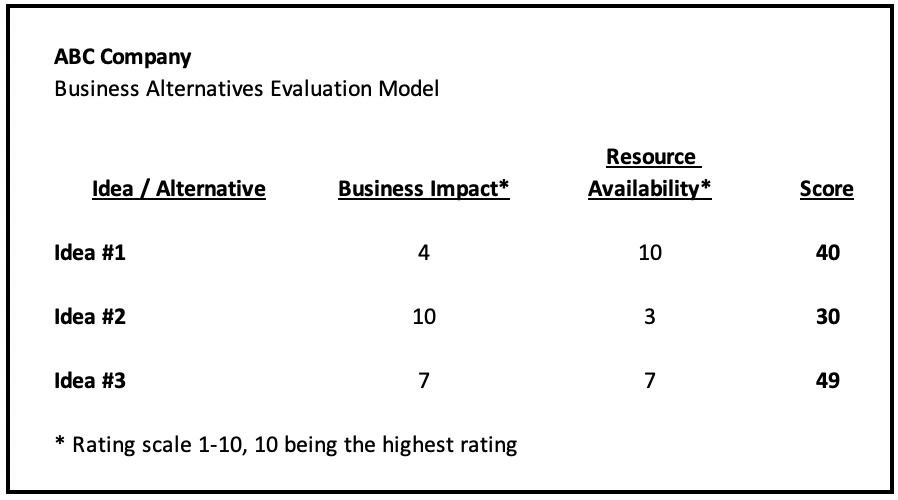Practical Advice for Businesses in Crisis – Emerging
The following is a guest blog written by Mike Sayre. It is a companion to the interview with Paul Gibbons titled Impact-Leading Change in the Digital Age .
What to start pushing forward on as you think about emerging from this crisis. You do need to push forward!
In the a previous two article, you learned about communicating openly and honestly with your team and understanding your cash and credit resources to push forward. But what do you push forward on?
Because this blog series is meant to be both practical and tactical, I am assuming that you and your company already have a mission, vision and values that are all in alignment and are the basis for the culture of your business. If not, please check out my At C-Level blogs 2, 3 and 4 at the Innovative Leadership Institute website.
As I write this, much of the world is in some kind of lockdown status for “non-essential” businesses. A major indicator that your business is not as essential as you might like it to be, is that during the pandemic, your business was either designated as “non-essential” or your sales dropped like a rock and will take months, if not years, to recover. Whenever your sales are falling off significantly, most of the following applies as well. You always want your business to be “essential” to fulfilling the needs of your customers!
Of course, there are varying degrees of “essential” and some businesses will rebound more quickly than others. What degree of “essential” is your business?
To get a gauge on that, ask yourself, “What are people doing or buying right now instead of what we provide and, more importantly, why?
Then ask yourself,
- “If the pandemic ends tomorrow, will they immediately come back to us as customers?”
- “If not immediately, is there something we can start doing now to incentivize them to come back sooner?”
- “Is it possible they will continue on with what they are doing now and not need us at all, or nearly as much, going forward?”
In any of these three cases, it’s time to engage with your customers and your team to come up with appropriate incentives to insure they come back and as soon as possible, or come up with new directions to keep them from splintering off to those new-found alternatives…which, actually, you and your team should be doing on a regular basis anyway!
If that all sounds like Marketing 101, it is. But it is amazing how much we forget and how far away we can get from our customers in a pandemic, or when things have just been going really well for a while! Your owners, customers, employees, suppliers and communities are all depending on you and your team to be thoughtful and committed in this process!
What does the business and/or its offering need to look like to not only keep current customers, but also to attract new customers as your business emerges from your crisis? Fact is, you will need new customers to fill in for current customers who just won’t come back no matter what you do, and to grow the business and thrive again going forward. What are your competitors doing? Is that what your customers want? Is your new offering really a compelling proposition for your customer and for your business?
Sales in our profitable electronics repair business (something like $12M-$15M at the time) with customers like Oracle, HP, Xerox and IBM were in decline…a crisis for us. Our customers told us we were being excluded from new bidding processes because we only had one location, which made the shipping cost of doing business with us too expensive. To be added back to the bidder lists, we needed to add our own repair locations in Europe and Asia like our much larger global competitors. Our vision had to be “adjusted” from being “the best in the business at what we do” to being “the best in the world at what we do!” We already had an international salesperson selling our customized electronic solutions who had made some nice partnership connections for us in The Netherlands and Hong Kong. So, we cultivated those connections into relationships, raised money from investors, bought a small well-run repair business in The Netherlands, and partnered with our repair contact in Hong Kong to create a small joint venture operation there. We were then put back on the bidding lists, the repair business started growing again, and we eventually achieved our vision to be “the best in the world,” according to our largest customer! Yes, this is a much bigger story, but I think it illustrates the point.
Now that you have some ideas on how you want to emerge from this crisis, you need to focus on what will have the biggest impact for your customers and business, based on what you can actually do considering your resource availability and/or constraints.
I sometimes use a quick model to evaluate such ideas/alternatives with my team:
“Impact” can be short term or long term. So you have to consider your time horizons on each alternative.
“Resources” can be financial, expertise, people, equipment, facilities, etc. Considering all of these, how would you rate it in terms of being possible for your business to do it?
“Score” is just multiplying your two ratings. This is where your risk analysis comes in.
Idea #1 is a slam dunk for an okay impact at best.
Idea #2 would have a huge impact, but is really beyond your resources in a big way.
Idea #3 would have a sizable impact, and you have the majority of what you need…do you have the money or other less obvious resources to fill in what’s missing?
This is just one way to look at it and a place to start. The larger the potential investment, the more analysis you really need to do. If you have the resources to do more than one of the alternatives, and they all make sense strategically, redo the model by taking out the best alternative and assume those resources no longer exist. Re-rate, score, and decide.
Please don’t let any model substitute for your common sense! Your results should mirror your intuition. If not, I’d think it through again.
Now, it’s time to think about the people and capabilities in-house that can be redirected to build up new business capabilities without causing major disruption in the current business, depending on how large the challenges are in the current business.
About the Author
Mike Sayre has successfully piloted businesses through difficult times of crisis for over 20 years – as a CEO, COO, CFO, and/or Board Director. He is currently an independent executive leadership consultant working through Civilis Consulting and the Innovative Leadership institute, trusted partners inspiring and enabling perpetual innovation, evolution, and growth in leaders and their businesses. If you would like to learn more or get help, please contact Mike through LinkedIn.



Trackbacks & Pingbacks
[…] crisis subjects your company to a harsh test. When this happens, people wonder whether the company will still exist after the crisis is over. This is why it’s important to conduct a business continuity planning exercise in […]
[…] crisis subjects your company to a harsh test. When this happens, people wonder whether the company will still exist after the crisis is over. This is why it’s important to conduct a business continuity planning exercise in […]
Leave a Reply
Want to join the discussion?Feel free to contribute!